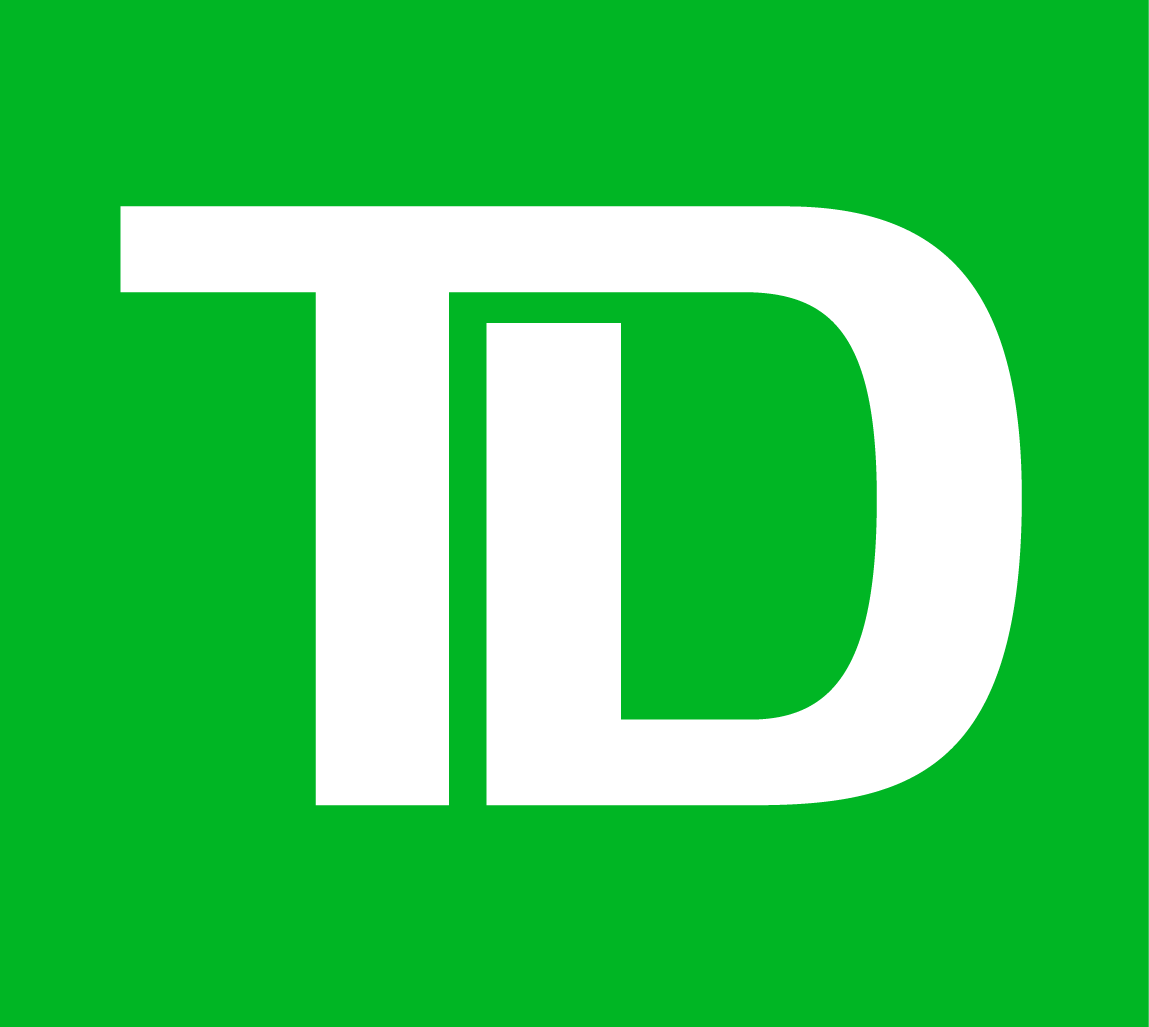
New alignment of segments reflects the growth and scale of businesses
TORONTO, Oct. 28, 2022 /CNW/ – TD Bank Group (“TD” or the “bank”) announced today a new alignment of its reportable business segments to establish a Wealth Management and Insurance segment. This change is effective the beginning of the fourth quarter of 2022 and reflects how the Bank will now view its businesses for management reporting purposes. Previously, Wealth Management and Insurance was reported along with Canadian Personal and Commercial Banking in the Canadian Retail segment.
“The Wealth Management and Insurance businesses provide a significant and growing contribution to TD’s success. They have an increasingly high profile in senior management analysis and strategic planning and this new reporting alignment provides TD shareholders with additional information on their performance,” said Kelvin Tran, Senior Executive Vice President and Chief Financial Officer, TD Bank Group.
An abridged version of the supplemental financial information package reflecting the new alignment of the Bank’s reportable segments on a retrospective basis is now available on td.com/investor.
TD Wealth Management includes the #1 online brokerage, the #1 institutional money manager and a rapidly growing Wealth Management advice provider in Canada. TD Insurance includes the #1 Direct-to-Consumer Insurer for Home and Auto, and the #1 Affinity provider in Canada. With combined compound annual growth of 12{21df340e03e388cc75c411746d1a214f72c176b221768b7ada42b4d751988996} net income after tax (NIAT) in Wealth Management and Insurance over the past five years, the businesses are well-positioned to continue to deliver exceptional experiences for customers and clients and achieve their strategic ambitions.
SEGMENT ALIGNMENT
The Bank will report its results under the following segments, with comparative periods showing the new aligned segments:
- Canadian Personal and Commercial Banking, comprised of the Canadian personal and commercial banking businesses which provides financial products and services to personal, small business and commercial customers, and TD Auto Finance Canada.
- U.S. Retail, comprised of the personal and business banking businesses in the U.S. operating under the brand TD Bank, America’s Most Convenient Bank®, primarily in the Northeast and Mid-Atlantic regions and Florida, TD Auto Finance U.S., and the U.S. wealth business, including Epoch and the Bank’s equity investment in Schwab.
- Wealth Management and Insurance, includes the Canadian wealth business which provides investment products and services to institutional and retail investors, and the insurance business which provides property and casualty insurance, as well as life and health insurance products to customers across Canada.
- Wholesale Banking, provides a wide range of capital markets, investment banking, and corporate banking products and services, including underwriting and distribution of new debt and equity issues, providing advice on strategic acquisitions and divestitures, and meeting the daily trading, funding, and investment needs of the Bank’s clients.
- Corporate, includes the Bank’s other activities.
An abridged version of the supplemental financial information package reflecting the newly aligned reportable segments is being provided to help readers of the Bank’s financial statements better understand the impact on the Bank’s consolidated financial results. The comparative period results reflecting the new segment alignment presented below and in the accompanying supplemental financial information package are unaudited. Certain information has been adjusted as defined under the heading ‘Non-GAAP Financial Measures’ below.
Presented below are reported and adjusted Net income (loss) by business segment reflecting the Bank’s newly aligned reportable segments.
|
Net Income (loss) by Business Segment1 |
|||||||||||||||||
|
(millions of Canadian dollars) |
For the three months ended |
For the nine months ended |
|||||||||||||||
|
July 31, 2022 |
April 30, 2022 |
January 31, 2022 |
July 31, 2022 |
||||||||||||||
|
Reported |
Adjusted |
Reported |
Adjusted |
Reported |
Adjusted |
Reported |
Adjusted |
||||||||||
|
Canadian Personal and Commercial Banking |
$ |
1,678 |
1,678 |
$ |
1,568 |
$ |
1,568 |
$ |
1,618 |
$ |
1,618 |
$ |
4,864 |
$ |
4,864 |
||
|
U.S. Retail2 |
1,442 |
1,464 |
1,367 |
1,198 |
1,272 |
1,272 |
4,081 |
3,934 |
|||||||||
|
Wealth Management and Insurance |
575 |
575 |
668 |
668 |
636 |
636 |
1,879 |
1,879 |
|||||||||
|
Wholesale Banking |
271 |
271 |
359 |
359 |
434 |
434 |
1,064 |
1,064 |
|||||||||
|
Corporate2 |
(752) |
(175) |
(151) |
(79) |
(227) |
(127) |
(1,130) |
(381) |
|||||||||
|
Net income (loss) |
$ |
3,214 |
3,813 |
$ |
3,811 |
$ |
3,714 |
$ |
3,733 |
$ |
3,833 |
$ |
10,758 |
$ |
11,360 |
||
|
For the years ended October 31 |
|||||||||||||||||
|
2021 |
2020 |
||||||||||||||||
|
Reported |
Adjusted |
Reported |
Adjusted |
||||||||||||||
|
Canadian Personal and Commercial Banking |
$ |
5,885 |
$ |
5,885 |
$ |
3,996 |
$ |
3,996 |
|||||||||
|
U.S. Retail |
4,985 |
4,985 |
3,026 |
3,026 |
|||||||||||||
|
Wealth Management and Insurance3 |
2,596 |
2,596 |
2,030 |
2,128 |
|||||||||||||
|
Wholesale Banking |
1,570 |
1,570 |
1,418 |
1,418 |
|||||||||||||
|
Corporate4 |
(738) |
(387) |
1,425 |
(600) |
|||||||||||||
|
Net income (loss) |
$ |
14,298 |
$ |
14,649 |
$ |
11,895 |
$ |
9,968 |
|||||||||
|
1 For more detailed information on a reported basis refer to the Segmented Information disclosure included with this press release. |
||
|
2 Refer to the “How We Performed” section of the Bank’s second quarter 2022 Management’s Discussion and Analysis (MD&A) and third quarter 2022 MD&A which are available on SEDAR at www.sedar.com, and are incorporated by reference, for a list of the items of note, and a reconciliation of adjusted to reported results. Non-GAAP financial measures and ratios used in this document are not defined terms under IFRS and, therefore, may not be comparable to similar terms used by other issuers. |
||
|
3 Adjusted Net income (loss) excludes charges associated with the acquisition of Greystone – 2020: $100 million ($98 million after tax). |
||
|
4 Adjusted Net income (loss) excludes the following items of note: |
||
|
i. |
Amortization of acquired intangibles – 2021: $285 million ($253 million after tax); 2020: $262 million ($225 million after tax). |
|
|
ii. |
Acquisition and integration charges related to the Schwab transaction – 2021: $103 million ($98 million after tax). |
|
|
iii. |
Net gain on sale of investment in TD Ameritrade – 2020: $1,421 million ($2,250 million after tax). |
|
Caution Regarding Forward-Looking Statements
From time to time, the Bank (as defined in this document) makes written and/or oral forward-looking statements, including in this document, in other filings with Canadian regulators or the United States (U.S.) Securities and Exchange Commission (SEC), and in other communications. In addition, representatives of the Bank may make forward-looking statements orally to analysts, investors, the media and others. All such statements are made pursuant to the “safe harbour” provisions of, and are intended to be forward-looking statements under, applicable Canadian and U.S. securities legislation, including the U.S. Private Securities Litigation Reform Act of 1995. Forward-looking statements include, but are not limited to, statements made in this document, the Management’s Discussion and Analysis (“2021 MD&A”) in the Bank’s 2021 Annual Report under the headings “Economic Summary and Outlook” and “The Bank’s Response to COVID-19”, under the headings “Key Priorities for 2022” and “Operating Environment and Outlook” for the Canadian Retail, U.S. Retail, and Wholesale Banking segments, and under the heading “Focus for 2022” for the Corporate segment, and in other statements regarding the Bank’s objectives and priorities for 2022 and beyond and strategies to achieve them, the regulatory environment in which the Bank operates, the Bank’s anticipated financial performance, and the potential economic, financial and other impacts of the Coronavirus Disease 2019 (COVID-19). Forward-looking statements are typically identified by words such as “will”, “would”, “should”, “believe”, “expect”, “anticipate”, “intend”, “estimate”, “plan”, “goal”, “target”, “may”, and “could”.
By their very nature, these forward-looking statements require the Bank to make assumptions and are subject to inherent risks and uncertainties, general and specific. Especially in light of the uncertainty related to the physical, financial, economic, political, and regulatory environments, such risks and uncertainties – many of which are beyond the Bank’s control and the effects of which can be difficult to predict – may cause actual results to differ materially from the expectations expressed in the forward-looking statements. Risk factors that could cause, individually or in the aggregate, such differences include: strategic, credit, market (including equity, commodity, foreign exchange, interest rate, and credit spreads), operational (including technology, cyber security, and infrastructure), model, insurance, liquidity, capital adequacy, legal, regulatory compliance and conduct, reputational, environmental and social, and other risks. Examples of such risk factors include the economic, financial, and other impacts of pandemics, including the COVID-19 pandemic; general business and economic conditions in the regions in which the Bank operates; geopolitical risk; the ability of the Bank to execute on long-term strategies and shorter-term key strategic priorities, including the successful completion of acquisitions and dispositions, business retention plans, and strategic plans; technology and cyber security risk (including cyber-attacks or data security breaches) on the Bank’s information technology, internet, network access or other voice or data communications systems or services; model risk; fraud activity; the failure of third parties to comply with their obligations to the Bank or its affiliates, including relating to the care and control of information, and other risks arising from the Bank’s use of third-party service providers; the impact of new and changes to, or application of, current laws and regulations, including without limitation tax laws, capital guidelines and liquidity regulatory guidance and the bank recapitalization “bail-in” regime; regulatory oversight and compliance risk; increased competition from incumbents and new entrants (including Fintechs and big technology competitors); shifts in consumer attitudes and disruptive technology; exposure related to significant litigation and regulatory matters; ability of the Bank to attract, develop, and retain key talent; changes to the Bank’s credit ratings; changes in currency and interest rates (including the possibility of negative interest rates); increased funding costs and market volatility due to market illiquidity and competition for funding; Interbank Offered Rate (IBOR) transition risk; critical accounting estimates and changes to accounting standards, policies, and methods used by the Bank; existing and potential international debt crises; environmental and social risk (including climate change); and the occurrence of natural and unnatural catastrophic events and claims resulting from such events. The Bank cautions that the preceding list is not exhaustive of all possible risk factors and other factors could also adversely affect the Bank’s results. For more detailed information, please refer to the “Risk Factors and Management” section of the 2021 MD&A, as may be updated in subsequently filed quarterly reports to shareholders and news releases (as applicable) related to any events or transactions discussed under the heading “Pending Acquisition” or “Significant and Subsequent Events and Pending Acquisitions” in the relevant MD&A, which applicable releases may be found on www.td.com. All such factors, as well as other uncertainties and potential events, and the inherent uncertainty of forward-looking statements, should be considered carefully when making decisions with respect to the Bank. The Bank cautions readers not to place undue reliance on the Bank’s forward-looking statements.
Material economic assumptions underlying the forward-looking statements contained in this document are set out in the 2021 MD&A under the headings “Economic Summary and Outlook” and “The Bank’s Response to COVID-19”, under the headings “Key Priorities for 2022” and “Operating Environment and Outlook” for the Canadian Retail, U.S. Retail, and Wholesale Banking segments, and under the heading “Focus for 2022” for the Corporate segment, each as may be updated in subsequently filed quarterly reports to shareholders.
Any forward-looking statements contained in this document represent the views of management only as of the date hereof and are presented for the purpose of assisting the Bank’s shareholders and analysts in understanding the Bank’s financial position, objectives and priorities and anticipated financial performance as at and for the periods ended on the dates presented, and may not be appropriate for other purposes. The Bank does not undertake to update any forward-looking statements, whether written or oral, that may be made from time to time by or on its behalf, except as required under applicable securities legislation.
Non-GAAP Financial Measures
In addition to reported results, the Bank also presents certain financial measures, including non-GAAP financial measures that are historical, non-GAAP ratios, supplementary financial measures and capital management measures, to assess its results. Non-GAAP financial measures, such as “adjusted” results, are utilized to assess the Bank’s businesses and to measure the Bank’s overall performance. To arrive at adjusted results, the Bank adjusts reported results for “items of note”. Items of note are items which management does not believe are indicative of underlying business performance. Non-GAAP ratios include a non-GAAP financial measure as one or more of its components. Examples of non-GAAP ratios include adjusted basic and diluted earnings per share (EPS), adjusted dividend payout ratio, adjusted efficiency ratio, and adjusted effective income tax rate. The Bank believes that non-GAAP financial measures and non-GAAP ratios provide the reader with a better understanding of how management views the Bank’s performance. Non-GAAP financial measures and non-GAAP ratios used in this document are not defined terms under IFRS and, therefore, may not be comparable to similar terms used by other issuers. For more information of a general nature, see “How the Bank Reports” in the Bank’s third quarter 2022 MD&A.
About TD Bank Group
The Toronto-Dominion Bank and its subsidiaries are collectively known as TD Bank Group (“TD” or the “Bank”). TD is the sixth largest bank in North America by assets and serves more than 27 million customers in four key businesses operating in a number of locations in financial centres around the globe: Canadian Personal and Commercial Banking, including TD Canada Trust and TD Auto Finance Canada; U.S. Retail, including TD Bank, America’s Most Convenient Bank®, TD Auto Finance U.S., TD Wealth (U.S.), and an investment in The Charles Schwab Corporation; Wealth Management and Insurance, including TD Wealth (Canada), TD Direct Investing, and TD Insurance; and Wholesale Banking, including TD Securities. TD also ranks among the world’s leading online financial services firms, with more than 15 million active online and mobile customers. TD had $1.8 trillion in assets on July 31, 2022. The Toronto-Dominion Bank trades under the symbol “TD” on the Toronto and New York Stock Exchanges.
SEGMENTED INFORMATION
For management reporting purposes, commencing the fourth quarter of 2022, the Bank reports its results under four key business segments: Canadian Personal and Commercial Banking, which includes the results of the Canadian personal and commercial banking businesses, and TD Auto Finance Canada; U.S. Retail, which includes the results of U.S. personal and business banking, TD Auto Finance U.S., the U.S. wealth business, and the Bank’s investment in Schwab; Wealth Management and Insurance; and Wholesale Banking. The Bank’s other activities are grouped into the Corporate segment. The comparative period results have been adjusted accordingly to reflect the new segment alignment.
Canadian Personal and Commercial Banking provides financial products and services to personal, small business and commercial customers, and includes TD Auto Finance Canada. U.S. Retail is comprised of the personal and business banking in the U.S. operating under the brand TD Bank, America’s Most Convenient Bank®, primarily in the Northeast and Mid-Atlantic regions and Florida, TD Auto Finance U.S., and the U.S. wealth business, including Epoch and the Bank’s equity investment in Schwab. Wealth Management and Insurance includes the Canadian wealth business which provides investment products and services to institutional and retail investors, and the insurance business which provides property and casualty insurance, as well as life and health insurance products to customers across Canada. Wholesale Banking provides a wide range of capital markets, investment banking, and corporate banking products and services, including underwriting and distribution of new debt and equity issues, providing advice on strategic acquisitions and divestitures, and meeting the daily trading, funding, and investment needs of the Bank’s clients. The Bank’s other activities are grouped into the Corporate segment. The Corporate segment includes the effects of certain asset securitization programs, treasury management, elimination of taxable equivalent adjustments and other management reclassifications, corporate level tax items, and residual unallocated revenue and expenses.
The results of each business segment reflect revenue, expenses, and assets generated by the businesses in that segment. Due to the complexity of the Bank, its management reporting model uses various estimates, assumptions, allocations, and risk-based methodologies for funds transfer pricing, inter-segment revenue, income tax rates, capital, indirect expenses and cost transfers to measure business segment results. The basis of allocation and methodologies are reviewed periodically to align with management’s evaluation of the Bank’s business segments. Transfer pricing of funds is generally applied at market rates. Intersegment revenue is negotiated between each business segment and approximates the fair value of the services provided. Income tax provision or recovery is generally applied to each segment based on a statutory tax rate and may be adjusted for items and activities unique to each segment. Amortization of intangibles acquired as a result of business combinations is included in the Corporate segment. Accordingly, net income for business segments is presented before amortization of these intangibles.
Non-interest income is earned by the Bank primarily through investment and securities services, credit fees, trading income, service charges, card services, and insurance revenues. Revenues from investment and securities services are earned predominantly in the Wealth Management and Insurance segment. Revenues from credit fees are primarily earned in the Wholesale Banking and Canadian Personal and Commercial Banking segments. Trading income is earned within Wholesale Banking. Both service charges and card services revenue are mainly earned in the U.S. Retail and Canadian Personal and Commercial Banking segments. Insurance revenue is earned in the Wealth Management and Insurance segment.
Net interest income within Wholesale Banking is calculated on a taxable equivalent basis (TEB), which means that the value of non-taxable or tax-exempt income, including dividends, is adjusted to its equivalent before-tax value. Using TEB allows the Bank to measure income from all securities and loans consistently and makes for a more meaningful comparison of net interest income with similar institutions. The TEB adjustment reflected in Wholesale Banking is reversed in the Corporate segment.
|
Results by Business Segment1 |
|||||||||||||||||||||||||
|
(millions of Canadian dollars) |
|||||||||||||||||||||||||
|
Canadian Personal |
Wealth |
||||||||||||||||||||||||
|
and Commercial |
Management |
Wholesale |
|||||||||||||||||||||||
|
Banking |
U.S. Retail |
and Insurance |
Banking2 |
Corporate2 |
Total |
||||||||||||||||||||
|
For the three months ended July 31 |
|||||||||||||||||||||||||
|
2022 |
2021 |
2022 |
2021 |
2022 |
2021 |
2022 |
2021 |
2022 |
2021 |
2022 |
2021 |
||||||||||||||
|
Net interest income |
$ |
3,199 |
$ |
2,848 |
$ |
2,453 |
$ |
1,990 |
$ |
249 |
$ |
196 |
$ |
786 |
$ |
632 |
$ |
357 |
$ |
338 |
$ |
7,044 |
$ |
6,004 |
|
|
Non-interest income |
1,061 |
953 |
648 |
691 |
2,511 |
2,582 |
290 |
451 |
(629) |
31 |
3,881 |
4,708 |
|||||||||||||
|
Total revenue |
4,260 |
3,801 |
3,101 |
2,681 |
2,760 |
2,778 |
1,076 |
1,083 |
(272) |
369 |
10,925 |
10,712 |
|||||||||||||
|
Provision for (recovery of) |
|||||||||||||||||||||||||
|
credit losses |
170 |
99 |
107 |
(96) |
– |
1 |
25 |
2 |
49 |
(43) |
351 |
(37) |
|||||||||||||
|
Insurance claims and related |
|||||||||||||||||||||||||
|
expenses |
– |
– |
– |
– |
829 |
836 |
– |
– |
– |
– |
829 |
836 |
|||||||||||||
|
Non-interest expenses |
1,807 |
1,655 |
1,715 |
1,518 |
1,150 |
1,093 |
691 |
635 |
733 |
715 |
6,096 |
5,616 |
|||||||||||||
|
Income (loss) before income |
|||||||||||||||||||||||||
|
taxes and share of net income |
|||||||||||||||||||||||||
|
from investment in Schwab |
2,283 |
2,047 |
1,279 |
1,259 |
781 |
848 |
360 |
446 |
(1,054) |
(303) |
3,649 |
4,297 |
|||||||||||||
|
Provision for (recovery of) |
|||||||||||||||||||||||||
|
income taxes |
605 |
544 |
126 |
161 |
206 |
226 |
89 |
116 |
(323) |
(125) |
703 |
922 |
|||||||||||||
|
Share of net income from |
|||||||||||||||||||||||||
|
investment in Schwab 3,4 |
– |
– |
289 |
197 |
– |
– |
– |
– |
(21) |
(27) |
268 |
170 |
|||||||||||||
|
Net income (loss) |
$ |
1,678 |
$ |
1,503 |
$ |
1,442 |
$ |
1,295 |
$ |
575 |
$ |
622 |
$ |
271 |
$ |
330 |
$ |
(752) |
$ |
(205) |
$ |
3,214 |
$ |
3,545 |
|
|
Results by Business Segment (continued)1 |
|||||||||||||||||||||||||
|
(millions of Canadian dollars) |
|||||||||||||||||||||||||
|
Canadian Personal |
Wealth |
||||||||||||||||||||||||
|
and Commercial |
Management |
Wholesale |
|||||||||||||||||||||||
|
Banking |
U.S. Retail |
and Insurance |
Banking2 |
Corporate2 |
Total |
||||||||||||||||||||
|
For the nine months ended July 31 |
|||||||||||||||||||||||||
|
2022 |
2021 |
2022 |
2021 |
2022 |
2021 |
2022 |
2021 |
2022 |
2021 |
2022 |
2021 |
||||||||||||||
|
Net interest income |
$ |
9,008 |
$ |
8,332 |
$ |
6,647 |
$ |
5,971 |
$ |
673 |
$ |
563 |
$ |
2,254 |
$ |
1,941 |
$ |
1,141 |
$ |
1,062 |
$ |
19,723 |
$ |
17,869 |
|
|
Non-interest income |
3,124 |
2,731 |
2,183 |
2,007 |
7,556 |
7,360 |
1,418 |
1,609 |
(535) |
176 |
13,746 |
13,883 |
|||||||||||||
|
Total revenue |
12,132 |
11,063 |
8,830 |
7,978 |
8,229 |
7,923 |
3,672 |
3,550 |
606 |
1,238 |
33,469 |
31,752 |
|||||||||||||
|
Provision for (recovery of) |
|||||||||||||||||||||||||
|
credit losses |
262 |
203 |
110 |
(174) |
1 |
2 |
11 |
(41) |
66 |
(91) |
450 |
(101) |
|||||||||||||
|
Insurance claims and related |
|||||||||||||||||||||||||
|
expenses |
– |
– |
– |
– |
2,177 |
2,057 |
– |
– |
– |
– |
2,177 |
2,057 |
|||||||||||||
|
Non-interest expenses |
5,255 |
4,928 |
4,944 |
4,800 |
3,503 |
3,163 |
2,231 |
2,051 |
2,163 |
2,187 |
18,096 |
17,129 |
|||||||||||||
|
Income (loss) before income |
|||||||||||||||||||||||||
|
taxes and share of |
|||||||||||||||||||||||||
|
net income from |
|||||||||||||||||||||||||
|
investment in Schwab |
6,615 |
5,932 |
3,776 |
3,352 |
2,548 |
2,701 |
1,430 |
1,540 |
(1,623) |
(858) |
12,746 |
12,667 |
|||||||||||||
|
Provision for (recovery of) |
|||||||||||||||||||||||||
|
income taxes |
1,751 |
1,576 |
460 |
393 |
669 |
713 |
366 |
390 |
(557) |
(361) |
2,689 |
2,711 |
|||||||||||||
|
Share of net income from |
|||||||||||||||||||||||||
|
investment in Schwab3,4 |
– |
– |
765 |
652 |
– |
– |
– |
– |
(64) |
(91) |
701 |
561 |
|||||||||||||
|
Net income (loss) |
$ |
4,864 |
$ |
4,356 |
$ |
4,081 |
$ |
3,611 |
$ |
1,879 |
$ |
1,988 |
$ |
1,064 |
$ |
1,150 |
$ |
(1,130) |
$ |
(588) |
$ |
10,758 |
$ |
10,517 |
|
|
Results by Business Segment1 |
|||||||||||||||||||||||||
|
(millions of Canadian dollars) |
|||||||||||||||||||||||||
|
Canadian Personal |
Wealth |
||||||||||||||||||||||||
|
and Commercial |
Management |
Wholesale |
|||||||||||||||||||||||
|
Banking |
U.S. Retail |
and Insurance |
Banking2 |
Corporate2 |
Total |
||||||||||||||||||||
|
For the years ended October 31 |
|||||||||||||||||||||||||
|
2021 |
2020 |
2021 |
2020 |
2021 |
2020 |
2021 |
2020 |
2021 |
2020 |
2021 |
2020 |
||||||||||||||
|
Net interest income |
$ |
11,195 |
$ |
11,289 |
$ |
8,074 |
$ |
8,834 |
$ |
762 |
$ |
772 |
$ |
2,630 |
$ |
1,990 |
$ |
1,470 |
$ |
1,612 |
$ |
24,131 |
$ |
24,497 |
|
|
Non-interest income |
3,722 |
3,415 |
2,684 |
2,438 |
9,827 |
8,857 |
2,070 |
2,968 |
259 |
1,471 |
18,562 |
19,149 |
|||||||||||||
|
Total revenue |
14,917 |
14,704 |
10,758 |
11,272 |
10,589 |
9,629 |
4,700 |
4,958 |
1,729 |
3,083 |
42,693 |
43,646 |
|||||||||||||
|
Provision for (recovery of) |
|||||||||||||||||||||||||
|
credit losses |
256 |
2,746 |
(250) |
2,925 |
2 |
– |
(118) |
508 |
(114) |
1,063 |
(224) |
7,242 |
|||||||||||||
|
Insurance claims and related |
|||||||||||||||||||||||||
|
expenses |
– |
– |
– |
– |
2,707 |
2,886 |
– |
– |
– |
– |
2,707 |
2,886 |
|||||||||||||
|
Non-interest expenses |
6,648 |
6,499 |
6,417 |
6,579 |
4,355 |
3,942 |
2,709 |
2,518 |
2,947 |
2,066 |
23,076 |
21,604 |
|||||||||||||
|
Income (loss) before income |
|||||||||||||||||||||||||
|
taxes and share of net |
|||||||||||||||||||||||||
|
income from investment in |
|||||||||||||||||||||||||
|
Schwab and TD Ameritrade |
8,013 |
5,459 |
4,591 |
1,768 |
3,525 |
2,801 |
2,109 |
1,932 |
(1,104) |
(46) |
17,134 |
11,914 |
|||||||||||||
|
Provision for (recovery of) |
|||||||||||||||||||||||||
|
income taxes |
2,128 |
1,463 |
504 |
(167) |
929 |
771 |
539 |
514 |
(479) |
(1,429) |
3,621 |
1,152 |
|||||||||||||
|
Share of net income from |
|||||||||||||||||||||||||
|
investment in Schwab and |
|||||||||||||||||||||||||
|
TD Ameritrade3,4 |
– |
– |
898 |
1,091 |
– |
– |
– |
– |
(113) |
42 |
785 |
1,133 |
|||||||||||||
|
Net income (loss) |
$ |
5,885 |
$ |
3,996 |
$ |
4,985 |
$ |
3,026 |
$ |
2,596 |
$ |
2,030 |
$ |
1,570 |
$ |
1,418 |
$ |
(738) |
$ |
1,425 |
$ |
14,298 |
$ |
11,895 |
|
|
1 The retailer program partners’ share of revenues and credit losses is presented in the Corporate segment, with an offsetting amount (representing the partners’ net share) recorded in Non-interest expenses, resulting in no impact to Corporate reported Net income (loss). The Net income (loss) included in the U.S. Retail segment includes only the portion of revenue and credit losses attributable to the Bank under the agreements. |
|
|
2 Net interest income within Wholesale Banking is calculated on a taxable equivalent basis (TEB). The TEB adjustment reflected in Wholesale Banking is reversed in the Corporate segment. |
|
|
3 The after-tax amounts for amortization of acquired intangibles and the Bank’s share of acquisition and integration charges associated with Schwab’s acquisition of TD Ameritrade are recorded in the Corporate segment. |
|
|
4 The Bank’s share of Schwab’s earnings is reported with a one-month lag. Refer to Note 7 of the Bank’s third quarter 2022 Interim Consolidated Financial Statements for additional details. |
|
Total Assets by Business Segment |
||||||||||||||
|
(millions of Canadian dollars) |
||||||||||||||
|
Canadian Personal |
Wealth |
|||||||||||||
|
and Commercial |
Management |
Wholesale |
||||||||||||
|
Banking |
U.S. Retail |
and Insurance |
Banking |
Corporate |
Total |
|||||||||
|
As at July 31, 2022 |
||||||||||||||
|
Total assets |
$ |
519,327 |
$ |
576,952 |
$ |
24,189 |
$ |
579,825 |
$ |
140,518 |
$ |
1,840,811 |
||
|
As at October 31, 2021 |
||||||||||||||
|
Total assets |
$ |
484,857 |
$ |
559,503 |
$ |
24,579 |
$ |
514,681 |
$ |
145,052 |
$ |
1,728,672 |
||
|
As at October 31, 2020 |
||||||||||||||
|
Total assets |
$ |
449,656 |
$ |
566,629 |
$ |
22,714 |
$ |
512,886 |
$ |
163,980 |
$ |
1,715,865 |
||
SOURCE TD Bank Group

For further information: Brooke Hales, Vice President, Investor Relations, 416-307-8647, [email protected]; Elizabeth Goldenshtein, Senior Manager, Media Relations, 647-625-3124, [email protected]







